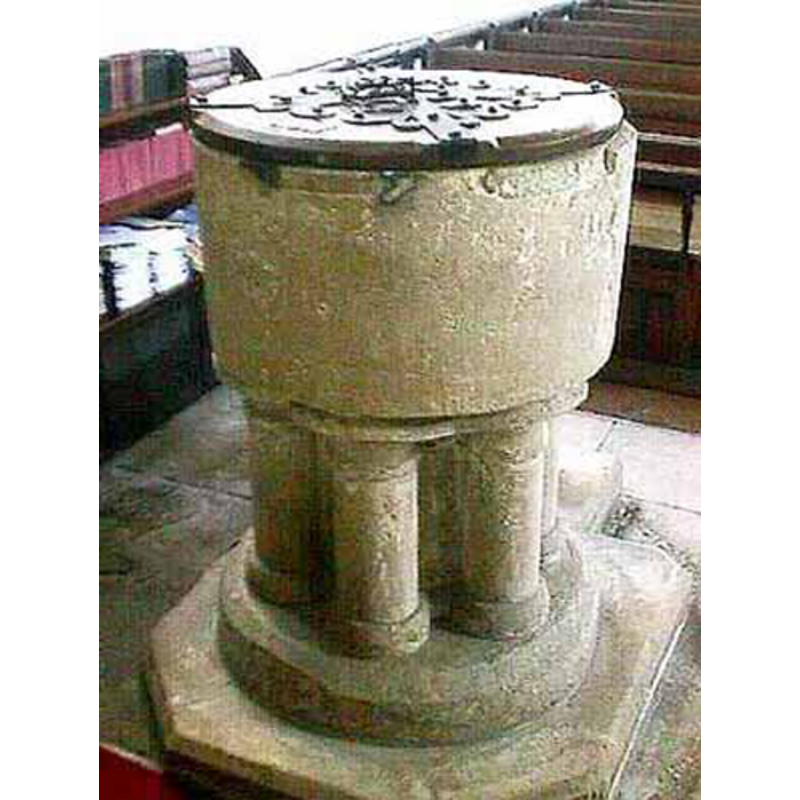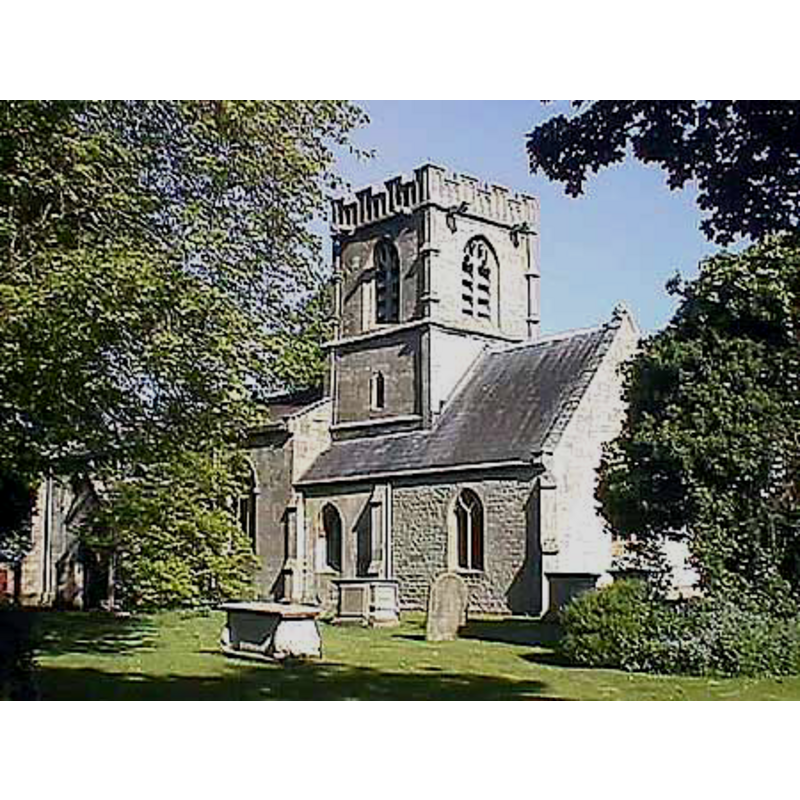Hempsted nr. Gloucester / Hempstead / Hemsted

Image copyright © John Wilkes, 2006
Standing permission
Results: 4 records
LB01: design element - motifs - moulding
view of church exterior
view of font
INFORMATION
FontID: 06737HEM
Object Type: Baptismal Font1
Church/Chapel: Parish Church of St. Swithun
Church Patron Saints: St. Swithun [aka Swithin]
Country Name: England
Location: Gloucestershire, South West
Directions to Site: Located 2.5 km SW of Gloucester
Font Location in Church: Inside the church
Century and Period: 13th century, Transitional / Early English
Cognate Fonts: [cf. FontNotes]
Credit and Acknowledgements: We are grateful to John Wilkes, of www.allthecotswolds.com, for the photographs of church and font]
Font Notes:
Click to view
Noted in Gough (1792), with a drawing by J. Basire: "That at Harbledon is a kind of cup on (I think) four pillars, like that at Hempsted in Gloucestershire." Tymms (1834) describes this font as "curious". It is noted in the National Gazetteer of 1868 simply as "an old font" [source: 2003 transcription by Colin Hinson in www.genuki.org.uk/big/eng/GLS/hempsted/Gaz1868.html]. Described in Cox & Harvey (1907) as a baptismal font of the Early English period, "curiously carved". [NB: C&H refer to the site as "Hempstead"]. Noted and illustrated in Wilkes & Taylor [www.allthecotswolds.com]: "The font is Transitional with a pedestal and six shafts." Noted in Verey & Brooks (1999-2002): "Font. Early C13". The font consists of a round basin with plain tapering sides, raised on a cluster of a central shaft and six outer colonnettes, a round lower base and a polygonal plinth with kneeling stone; the only ornamentation on the font are the simple moouldings at the top and bottom of the colonnettes of the base; wooden cover, round, with metal decoration; probably modern. Some damage evident to the upper rim of the basin, with marks where the staples of the old font would have been.
MEDIUM AND MEASUREMENTS
Material: stone
Font Shape: bucket-shaped (mounted)
Basin Interior Shape: round
Basin Exterior Shape: round
LID INFORMATION
Date: modern?
Material: wood, oak
Apparatus: no
Notes: [cf. FontNotes]
REFERENCES
The National Gazetteer: a Topographical Dictionary of the British Isles, London: Virtue & Co., 1868
Cox, John Charles, English Church Furniture, New York: E.P. Dutton & Co., 1907
Gough, Richard, "Description of the old font in the Church of East Meon, Hampshire, 1789: with some observations on fonts", X, Archaeologia, 1792, pp. 183-209; p. 186, 188 and pl. XXIV
Tymms, Samuel, Family Topographer, being a compendious account of the antient and present state of the counties of England: vol. IV, Oxford circuit, London: Nichols & Son, 1834
Verey, David, Gloucestershire, London: Penguin Books, 1999-2002

